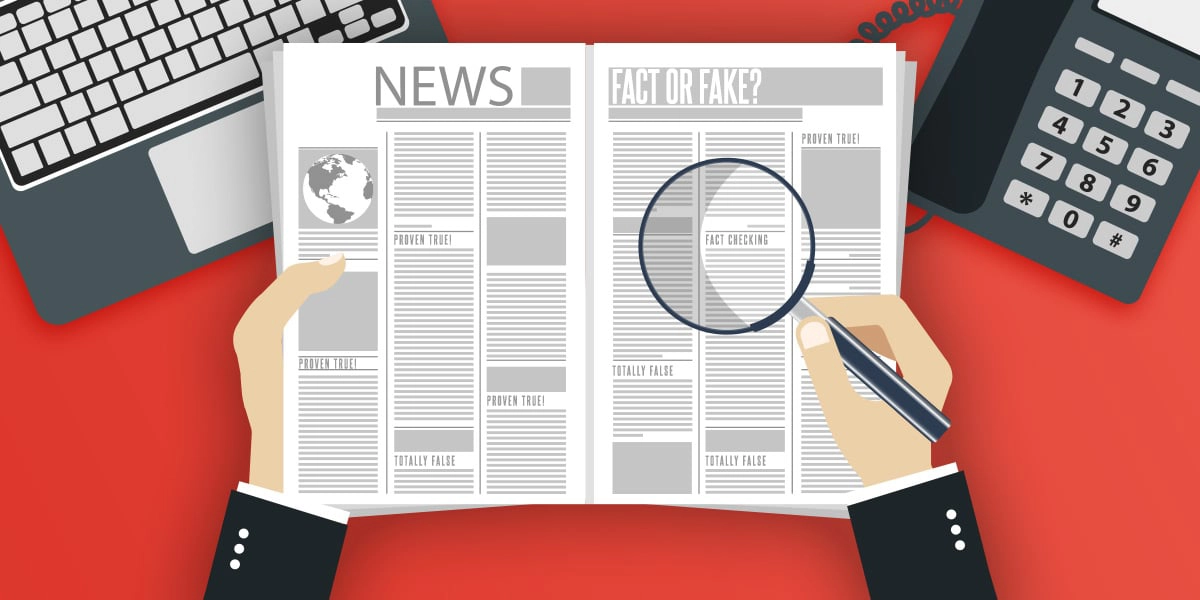If you’re using social media to connect with your customers, the odds are better than good that you’re not creating all of the content you post yourself. Sharing is part of the fun of social media, and it’s so easy. When you find a great post that someone else has created that your audience would appreciate, all you have to do is hit the ‘share’ button – and that’s where things get problematic.
[Tweet “People are writing outlandish headlines so they can get clicks and can get ad money.”]
Facebook’s COO Sheryl Sandberg explains the issue this way. “People are writing outlandish headlines so they can get clicks and can get ad money.” It’s possible to find examples all over the political spectrum, from assertions that victims of mass shootings never really existed to claims that drinking salty cabbage juice will click cancer. Some stories are so obviously fake that it’s easy to avoid passing them along, but there’s a lot of material that could fool a reasonable person into thinking it’s true.
Luckily, there are steps you can take to ensure the material you’re sharing is legitimate and reputable before you share it with your fans and followers. Going through the fact-checking process can result in it taking a little longer to create your social media content, but it’s worth it to maintain your reputation as a reliable resource your customers can depend on to tell the truth.
Super Simple Fact-Checking Step #1: Google the Article You’re Thinking of Sharing
Putting the exact headline of the article you’re considering sharing. If it’s been debunked as fake news, you’ll see results indicating that. The top name in the fact-checking world is Snopes.com, which will share the original post, fact check it, and sometimes share how long the post has been around and different forms it has taken. Obviously, if a post has been caught out as fraudulent online, don’t share that post.
Super Simple Fact-Checking Step #2: Consider the Source
If your Google search doesn’t turn up anything troubling, consider the source of the post. Some media outlets are more reliable than others – and some media outlets don’t actually exist! Fan pages masquerading as legitimate news outlets are responsible for much of the misinformation on Facebook and other social media outlets. Wikipedia maintains a list of known fake news sites. If the post you’re considering sharing comes from a known fake news site, don’t share it.
Super Simple Fact-Checking Step #3: Wait Two Days
48 hours is an eternity on social media. If the post you’re considering sharing makes you wonder if it is or isn’t fake news, give it two days. In that timeframe, most fraudulent stories are debunked. If the story is legitimate, you may see additional coverage of that story appear in other places. You can even do your own research, particularly if the post is of local concern. A quick phone call to confirm or deny a story is true can save you the embarrassment of sharing misinformation.
What Happens if You Shared Fake News by Mistake?
Everyone makes mistakes. If it comes to your attention that a post you shared was fake news, the best way to handle it is to remove the post, make a post stating that it was fake news and you’re sorry for sharing it, and promise to do better in the future. We’re in a very dynamic messaging age, and your fans and followers know that fake news happens. The key is handling it in a professional, authentic manner. Don’t beat yourself up over it. Just do your best to avoid repeating the same mistake!




